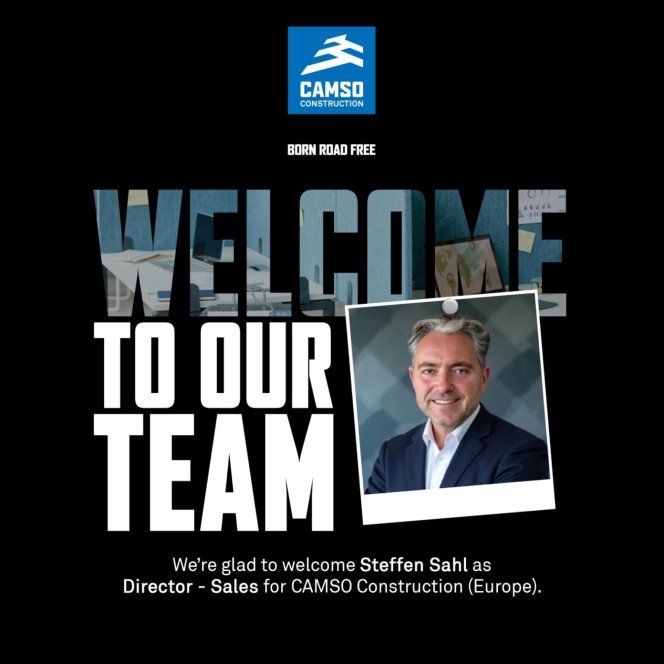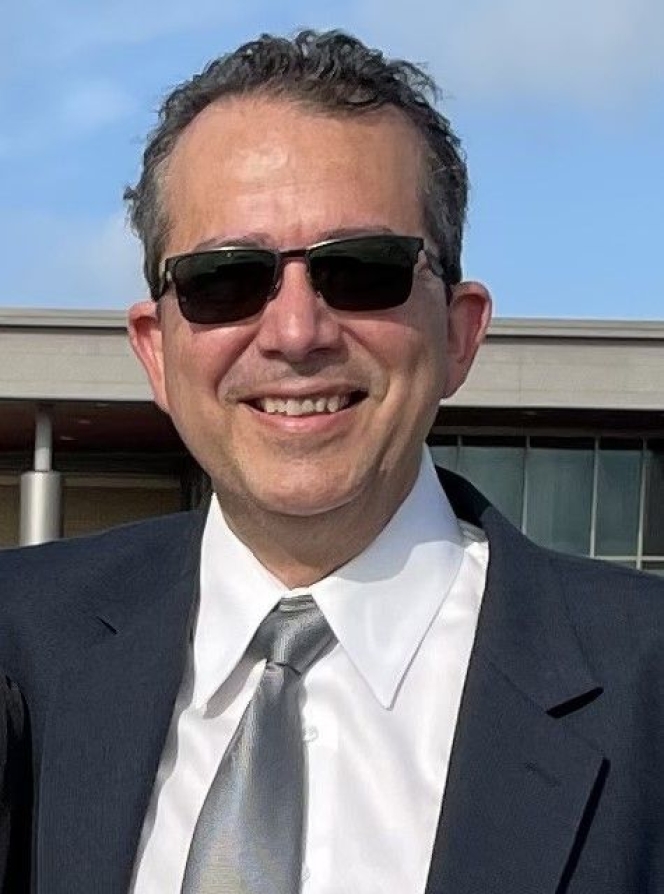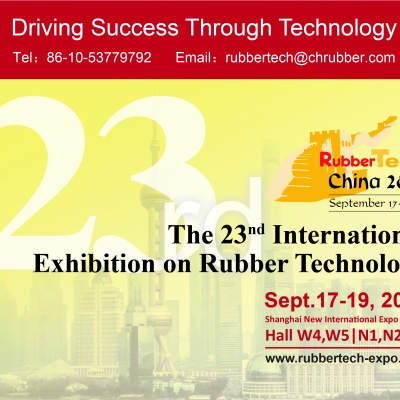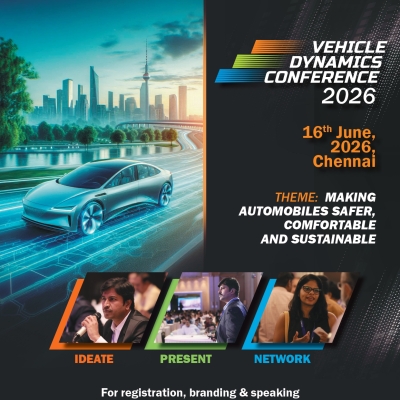The 15th Asia Pacific Carbon Black Conference Concludes With Record-Breaking Attendance!
- By Gaurav Nandi
- December 03, 2024
The Asia Pacific Carbon Black Conference 2024 – Perspectives in Asia Pacific, one of the largest and most acknowledged global carbon black industry events, unfolded in Kolkata, India, marking a historic moment for the city. The 15th edition welcomed a record-breaking 252 delegates and featured compelling discussions on the future of the carbon black market, which is projected to reach USD 30.15 billion by 2029. Over three days, industry leaders explored key trends, sustainability efforts and technological innovations, underscoring the sector’s dynamic evolution and the growing importance of India in shaping its future.
The sprawling banquet of a renowned hotel in the City of Joy was attuned to the murmuring of delegates from across the globe when the speaker on the dais invited the International Advisory Committee Chairman Amit Choudhary to address the crowd. With utter excitement, the chairman ascended the stage and opened the 15th Asia Pacific Carbon Black Conference doors to the curious assembly. Over the next three days, the event featured – workshops, intriguing sessions and panel discussions on the global carbon black market, which is slated to reach USD 30.15 Billion by 2029, according to Mordor Intelligence.

From sessions on the latest trends within the space to the use of recovered carbon black and sustainability issues, the conference was a boiling cauldron of information, coupled with an exhibition spanning different makers and associated suppliers to the industry.
Speaking to Tyre Trends exclusively, Choudhary said, “Key takeaways from the conference were impactful for both participants and delegates, with a record-breaking 252 attendees from around the globe. The exhibition, featuring 36 stalls, marked the largest in the Asia-Pacific region in the event’s 31-year history. The conference kicked off with two workshops on day one, focusing on the technical aspects of carbon black and its applications across the tyre and other industries. About 70 attendees engaged in a robust discussion, addressing numerous technical queries from leading players in the carbon black industry, including Birla Carbon, Tokai Carbon, Himadri Speciality Chemical Ltd, Epsilon, PCBL, and so on.”

He added, “For the first time in its history, the conference featured panel discussions on different topics of the carbon black industry covering marketing, raw materials, application, technology and the future of carbon black, which fostered intense engagement from participants. These sessions provided valuable insights and sparked in-depth discussions, impacting all those who attended.”
Many companies attending the conference were not direct carbon black producers but played key roles in the carbon value chain, either as suppliers to the carbon black industry or as technological collaborators or customers. This diverse representation highlighted the industry’s interconnected nature, with attendees gaining exposure to the latest technologies and processes shaping the sector.
“The conference brought together a global audience, fostering collaboration and providing significant opportunities for local suppliers to engage with emerging technologies. Carbon black production in this region, particularly in India, is experiencing rapid growth.
Companies across the country, from Gujarat and Maharashtra in the west to the east and south, are expanding their operations to meet increasing demand. This growth presents ample opportunities for suppliers of essential equipment and consumables to the carbon black industry, such as refractory manufacturers, bag suppliers and packing material providers. Ultimately, the entire supply chain stands to benefit from the increased collaboration and knowledge exchange fostered at the conference,” averred Choudhary.

Quick view
George Haines, Global Product Director and Avijit Sasmal, Chief Sustainability Officer at Himadri Speciality Chemical Limited, highlighted the carbon black industry’s progress in sustainability and circularity. They emphasised advancements such as the use of recycled pyrolysis oil and reclaimed carbon black and achievements like EcoVadis and ISCC+ certifications. Himadri already achieved the milestones and is maintaining Zero Liquid Discharge (ZLD) across plants. Innovations like LFP Cathode Active Material for EV batteries and renewable energy showcased Himadri’s future readiness. This session set a benchmark for aligning industry practices with global climate goals.
Senior Manager - Technology, K. Arun Kumar, and Manager, Technology and Business Development, Dr. P.M. Sivaram, at CUMI Super Refractories, discussed enhancing reactor life in the carbon black industry through condition monitoring and refractory solutions. They emphasised the need for failure analysis, material characterisation, and data-driven strategies to predict failures, improve productivity, and reduce downtime, ultimately leading to more efficient and sustainable operations in the industry.
The workshop by Himadri Speciality Chemicals Limited Plant Head Kingshuk Bose, on ‘Recent Advancements in Carbon Black Technologies’ provided an overview of carbon black, its applications, and recent technological innovations in its manufacturing processes. He discussed new technologies such as plasma and nanotechnology, which enhance production efficiency and product characteristics. Additionally, AI and machine learning were highlighted to optimise processes, improve quality and predict maintenance needs, ultimately advancing carbon black manufacturing and packaging strategies.

The former Chief Advisor of Research and Development at Apollo Tyres, P K Mohamed, an industry stalwart, addressed the future of the tyre industry, focusing on advancements in carbon black technology in his key note address. He noted that pneumatic tyres, essential for load support, require optimal structures to endure operational pressures. The industry faced megatrends such as mobility, digitisation, electrification, and the shift toward renewable materials. Key customer expectations centre on rolling resistance, traction, durability, and sustainability improvements. Enhancements in carbon black properties, including particle size and surface chemistry, are vital for achieving these goals. The industry’s evolution towards higher sigma levels indicated a commitment to quality and performance, necessitating collaborative efforts in research and development to meet future demands.
Notch Consulting Inc. Founder and President Paul Ita spoke on the outlook for 2024 and highlighted significant developments in the global carbon black and tyre industries. He noted a projected total investment of INR 27.3 billion in new tyre capacity from 2023 to 2028, with Asia, especially China and India, leading in new projects. He also discussed the impacts of EU sanctions on Russian carbon black imports. These sanctions are shifting trade flows, with India emerging as a key supplier to replace Russian volumes. The analysis included production capacity and utilisation trends with a forecast for growth in carbon black production despite current disruptions.
The AGM Strategy at Epsilon Carbon, Sagar Mathur, noted that geopolitical shifts, rapid urbanisation, climate change, sustainability, and technological advancements are shaping the future of the carbon black industry. Key trends included the growing demand for Electric Vehicle (EV) tyres, increased focus on circularity and recycling technologies, and the need for advanced speciality products. He highlighted that urbanisation is expected to strain resources while geopolitical conflicts are reshaping supply chains. The industry must adapt to these changes while addressing environmental concerns, leading to new product development, particularly in sustainable materials.

Vice President of Sales and Marketing (CBD), Kane Hanneke and Vice President of Business Development and Sales (CBD), Surge Klunder, at Himadri Specialty Chemical Ltd, focused on the current demand and supply dynamics of carbon black in North America and the European Union as of October 2024. In their presentations, they highlighted key economic indicators such as GDP growth, inflation, and the Manufacturing Purchasing Managers’ Index (PMI), while discussing challenges faced by domestic producers, including import duties, geopolitical tensions, and rising oil costs. Kane also mentioned a notable production increase among leading carbon black producers, particularly in China and India, and addressed the impact of new tariffs on Mexican imports.
Executive Vice-President and Regional Head of Sales and Marketing at Birla Carbon, Shashank Awasthi, discussed the dynamics of the carbon black market in Asia and Europe with a focus on growth plans and regional capacities. He highlighted that China dominates the market with a capacity share of 47 percent and a demand share of 37 percent. He also covered competition in India, where local producers faced challenges from imports, particularly from China, Korea, and Russia. His analysis indicated a projected CAGR of 5 percent for the Southeast Asia carbon black market from 2022 to 2027, driven by rising disposable incomes. It increased automotive production, with Asia accounting for approximately 60 percent of global automobile manufacturing.
The presentation by Zircoa Managing Director Thomas Bohm focused on the role of zirconia refractories in enhancing reactor performance during carbon black production. Zirconia, a unique ceramic material, offers exceptional properties such as high thermal resistance, lower thermal conductivity, and erosion resistance, making it suitable for high-temperature applications in reactors. The advantages of zirconia include increased reactor efficiency, improved product yields, and the ability to withstand aggressive process gases. However, challenges such as degradation from thermal shock and alkali attacks were noted, emphasising the importance of proper alignment and operational practices to maximise the lifespan of zirconia linings.
In his virtual keynote session, Zhu Zilong, deputy director of design at Doright, discussed the emerging supply trends in equipment manufacturing, particularly focusing on the shift from individual equipment supply to comprehensive equipment packages.
The landmark event saw the attendance of dignitaries and industry stalwarts, including the Chief Secretary to the Government of West Bengal, Dr Manoj Pant, Himadri Speciality Managing Director Anurag Choudhary, Tokai Carbon President Hagime Hagasaka, Group Country Head, Aditya Birla Group Thailand, and Chief Expansion Officer Birla Carbon Asia, Sanjeev Sood, among others.
Key Speakers included Aditya Birla Group’s Chief Sustainability Officer Deeksha Vats, Former President at ALSTOM Power Energy Recovery CP Natarajan, Vidhitech Solutions Founder Vinod Taneja, ABG Trading President John Kennelly, Senior Manager Research and Development of Compound Development at CEAT Limited Dr Pranab Dey, Head - Projects Business at Thermax Limited Naveen Sadhu and Rathi Group Director Ravi Rathi among others.
The event was attended by delegates from leading carbon black producers, such as Thai Tokai Carbon Product Company Limited, Hyundai OCI, Aegean First Company, Zircoa Inc., Phillips Carbon Black Limited, CITGO Corp and others.
Curtain Call
Amit Choudhary commented about the conference, “Conferences like this serve as crucial platforms for advancing technological progress in the industry. They provide insights into global trends, revealing which players are exploring new technologies and how different governments are approaching industry expectations. These events create an opportunity for stakeholders to understand evolving needs as well as the requirements of end customers.”
He added, “For instance, during our recent conference, several customers presented compelling insights, with both in-person and online interactions offering a deeper understanding of the tyre industry’s future. The rise of EVs is a key development demanding a shift in tyre technology and manufacturing processes. Current tyres are general-purpose, but as EV adoption accelerates, specialised tyres will become necessary. In the near future, we will see the emergence of EV-specific tyres alongside innovations in related non-tyre markets.”
He also noted that India, with its significant market share, is poised for substantial growth. Established markets in the US and Europe are facing challenges with plant closures and shifting demands. The ongoing geopolitical landscape, including tensions in China and Russia, is influencing market dynamics. However, India remains in a favourable position for investment and is set to experience impressive growth in the sector.
Looking ahead, the next conference is set to take place in 2026.
Hankook Tyre UK Expands Truck And Bus Team With Two Key Appointments
- By TT News
- September 14, 2025

Hankook Tyre UK has expanded its Truck and Bus team with two key appointments. Jason Bloor has been appointed as National Account Manager, while Peter Hatton has been appointed as Regional Sales Manager for the combined Midlands and Northwest region.
Bloor, who will be overseeing national fleets activities, brings with him 34 years of experience in the tyre industry, while Hatton, who joined Hankook Tyre UK in May, has over three decades of expertise in the tyre and transport industry.
Chang-Yool Han, Managing Director, Hankook Tyre UK, said, “Following the opening of Hankook House, our new UK headquarters, we are pursuing ambitious growth plans for the UK market. We are delighted to welcome Jason Bloor and Peter Hatton to the team. Their extensive industry experience will undoubtedly make an immediate impact on the company’s continued success."
Bloor said, “I joined the tyre industry straight out of school in 1991 starting as a fitter where I discovered a passion for fleet management. Over the last 20 years, I have managed mileage contracts and key accounts, taking on responsibility in both sales and operations. I am excited to bring my decades of experience to Hankook and help drive brand awareness and strengthen customer relationships.”
Hatton said, “Having spent 30+ years working in the tyre and transport industry, I am privileged to be part of the Hankook UK team. The company offers an excellent range of tyre products across its premium Hankook brand and associate brand Laufenn. I look forward to applying my skills and experience in supporting both current and new customers while working alongside a brilliant team.”
CAMSO Construction Appoints Steffen Sahl As Sales Director Europe
- By TT News
- September 13, 2025

CAMSO Construction has appointed Steffen Sahl as Director of Sales for Europe. Sahl brings with him 25 years of experience in the European OTR mobility sector.
The company statement read: “With over 25 years of experience in the European OTR mobility sector, and a successful entrepreneurial journey in distribution, Steffen combines deep market insight with a customer-first mindset.”
“This is a tremendous opportunity, and I am filled with gratitude for everyone who has been part of my professional path so far. A huge thank you to my previous colleagues, mentors and teams – I carry your lessons and support with me. I am deeply honoured by the trust of the CEAT leadership, and am immensely looking forward to building on Camso's strong foundation, driving growth across European markets and collaborating with the talented team in the CEAT speciality family,” said Sahl on his appointment.
JK Tyre Secures Co-Presenting Sponsorship of Men's Asia Cup 2025
- By TT News
- September 12, 2025

JK Tyre & Industries Ltd, one of India's largest tyre manufacturers, has announced its partnership as co-presenting sponsor of the Men's Asia Cup 2025, as the cricket tournament begins its three-week run across venues in the United Arab Emirates.
The sponsorship deal with Sony Sports Network covers the Twenty20 International tournament running from September 9 to 28 across Dubai and Abu Dhabi, marking JK Tyre's expansion from its traditional motorsport sponsorship into cricket broadcasting.
The partnership positions JK Tyre to reach cricket audiences across India and Asia during prime-time broadcasts of the 19-match tournament, which features eight national teams competing for the continental title.
"At JK Tyre, we have always believed in the power of sport to unite, inspire, and drive passion. Having nurtured motorsport for over three decades, we are excited to bring the same spirit to cricket, a game that binds millions of fans across Asia," said Srinivasu Allaphan, Director-Sales & Marketing at JK Tyre & Industries Ltd.
"Our association with the Men's Asia Cup 2025 is a strategic step in strengthening our brand visibility across India and Asia and reinforcing our positioning as 'Desh Ka Tyre,' a brand that reflects the aspirations and passions of today's India."
JK Tyre, which has built its sporting credentials through decades of involvement in motorsport, is leveraging cricket's popularity to strengthen its market position across Asia's emerging economies.
The Asia Cup represents one of cricket's premier regional tournaments, with the current edition featuring teams including India, Pakistan, Sri Lanka, Bangladesh and Afghanistan amongst others. The tournament serves as preparation for next year's T20 World Cup.
InnoVent Technology Appoints Jose Rodriguez As CTO
- By TT News
- September 11, 2025

InnoVent Technology LLC has appointed Jose Rodriguez as its new Chief Technology Officer. He brings three decades of extensive experience in industrial digital systems, automation and simulation platforms to the role.
Rodriguez was most recently the Global Technical Authority at Wood Group, a multi-billion-dollar engineering firm, and previously served as CTO of Ingenious Inc., prior to its acquisition by Wood. In his new position, he will direct a global team focused on advancing the company's InnoSIM digital twin platform.
His leadership will be central to integrating commercial AI and automation systems, significantly boosting predictive modelling capabilities and deploying digital twin projects on an international scale. The appointment underscores InnoVent's strategic commitment to leading the industry through cutting-edge technological innovation and advanced digital solutions.






Comments (0)
ADD COMMENT